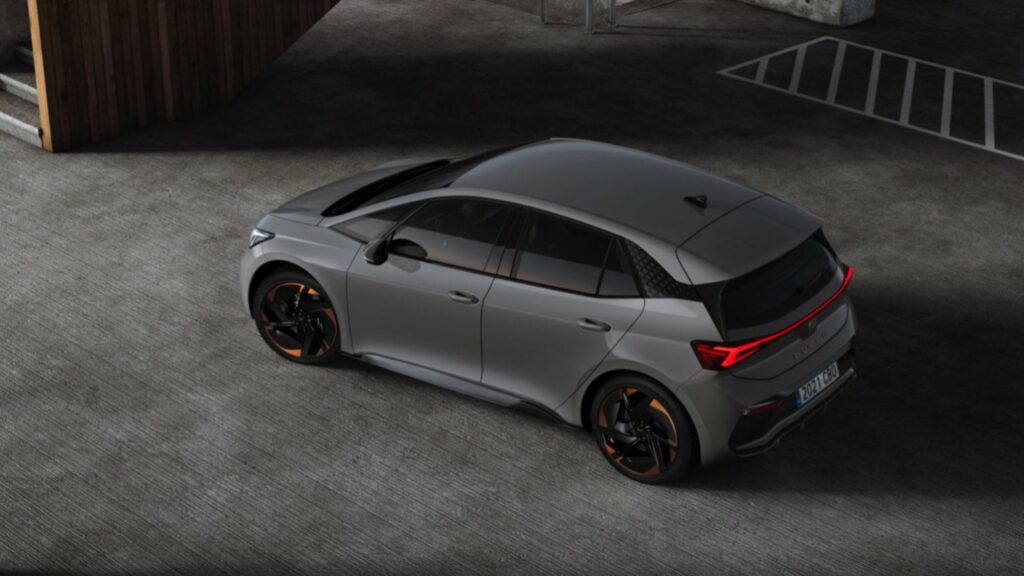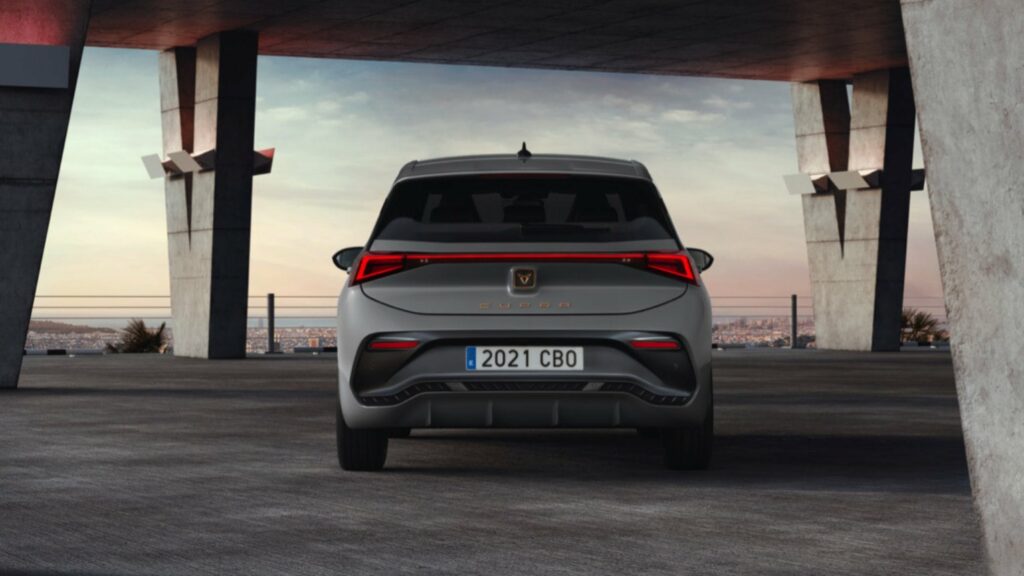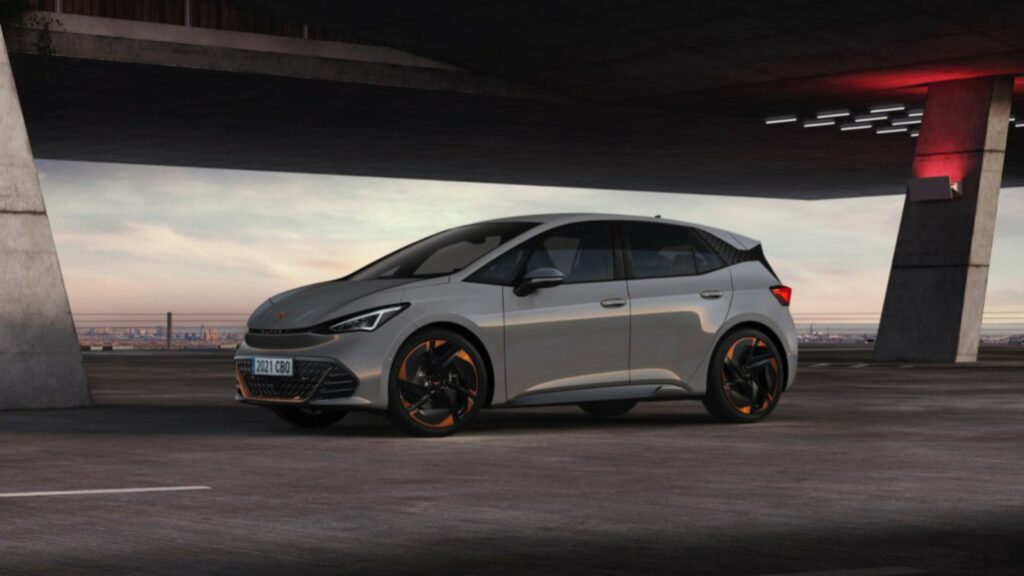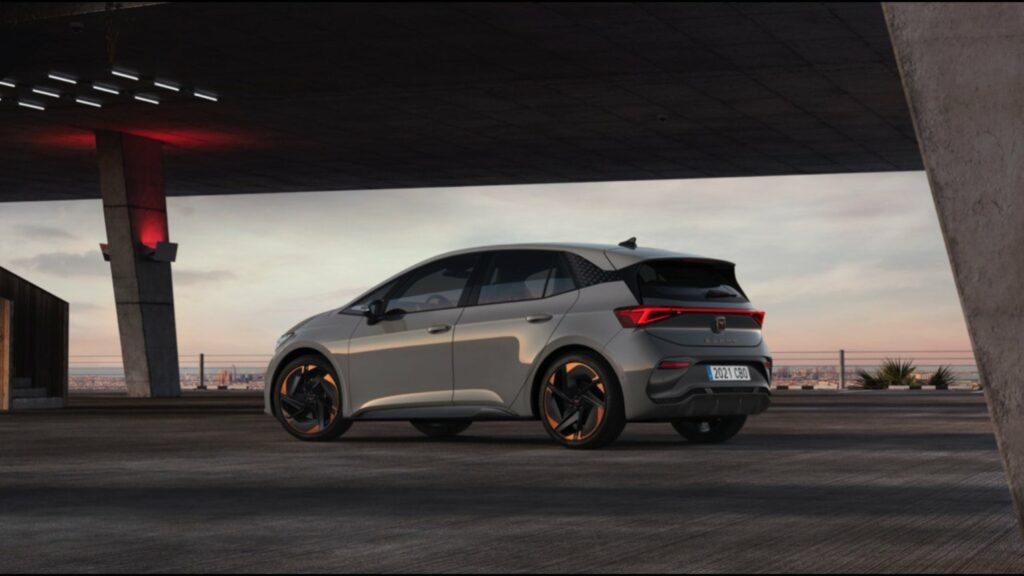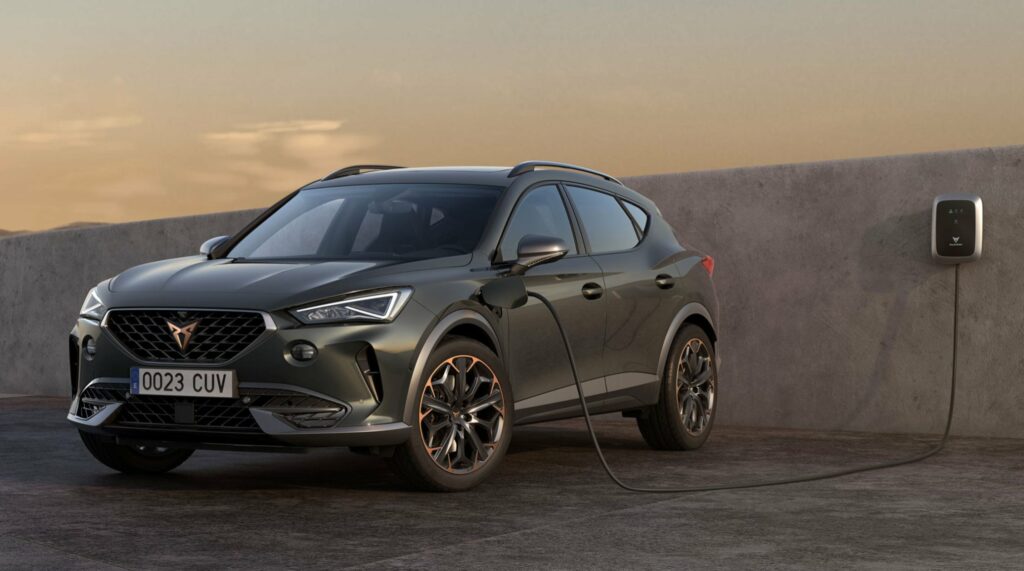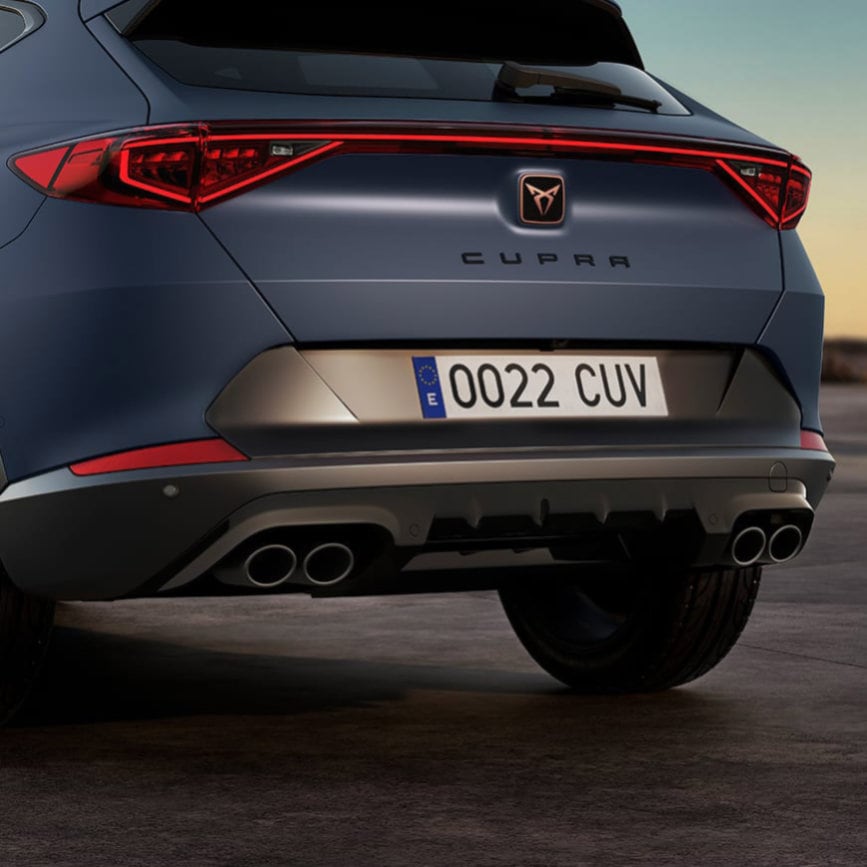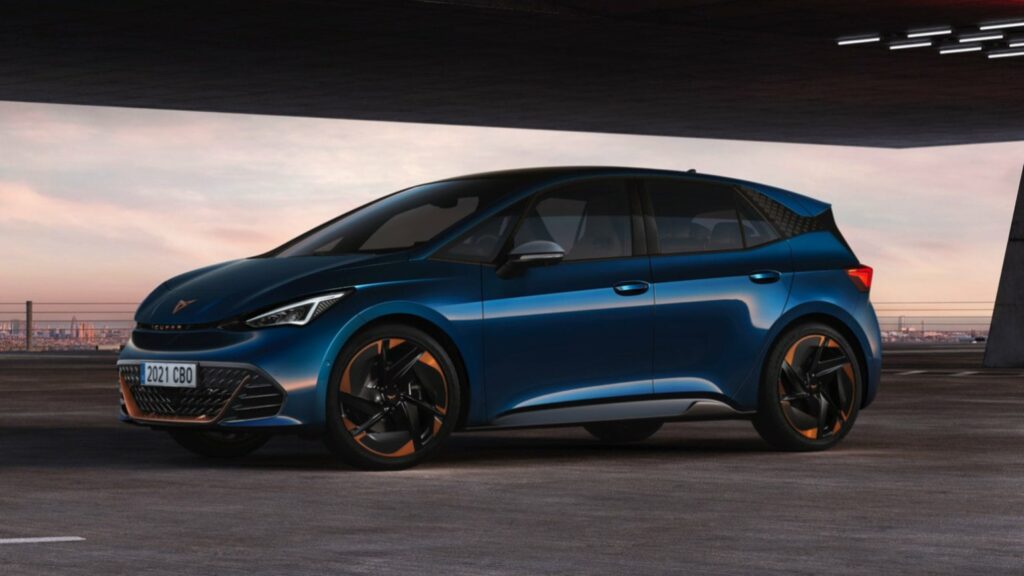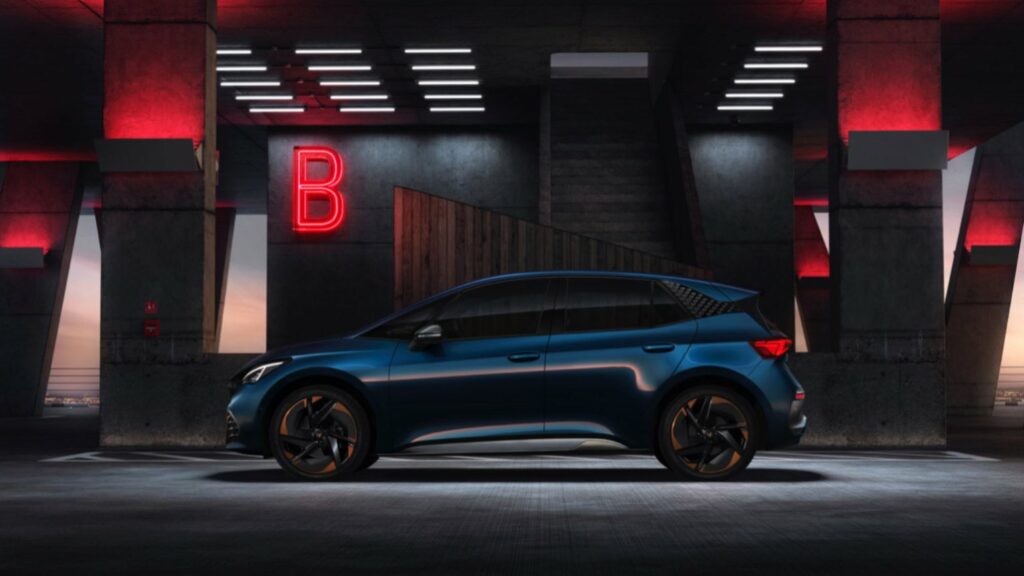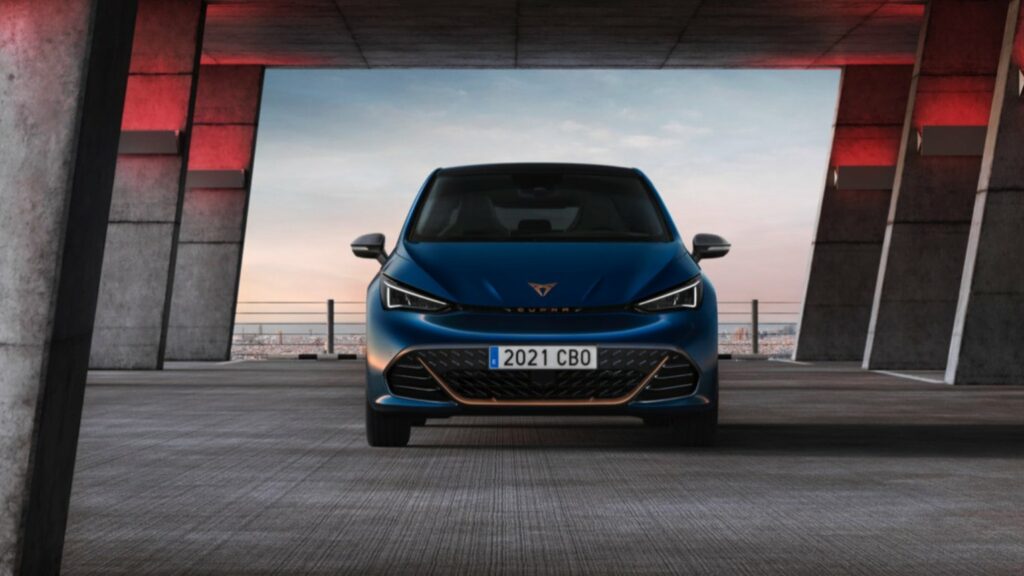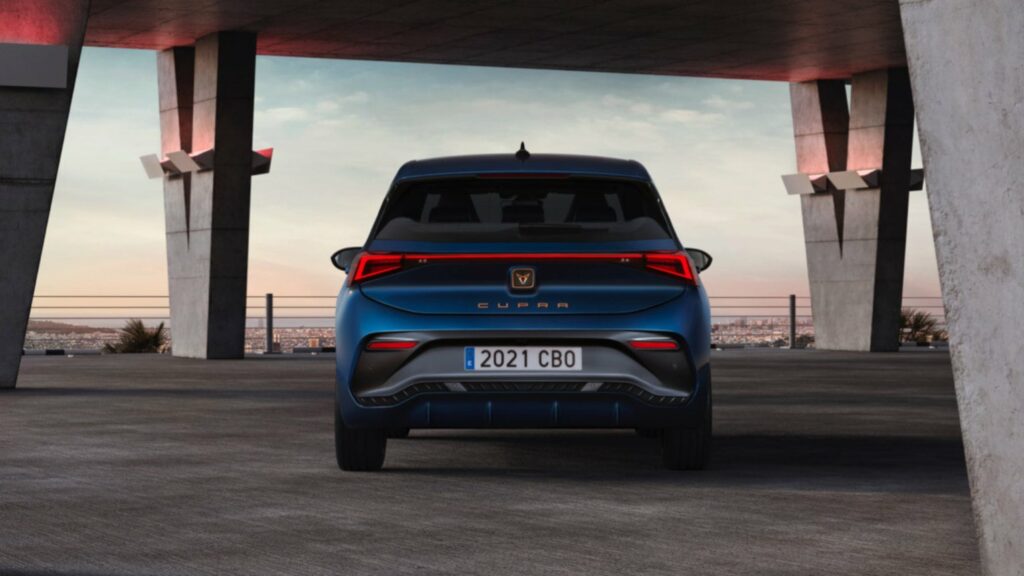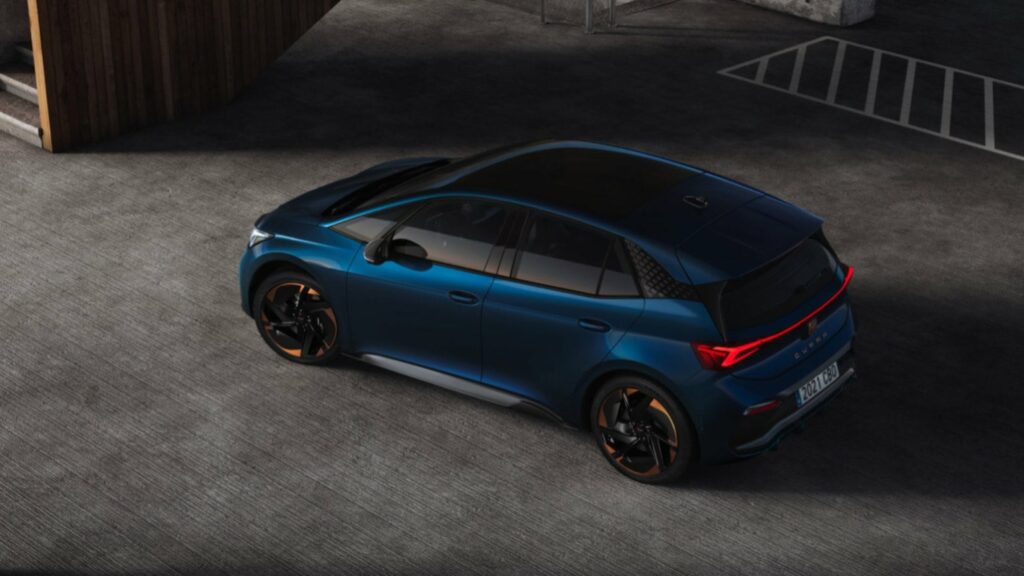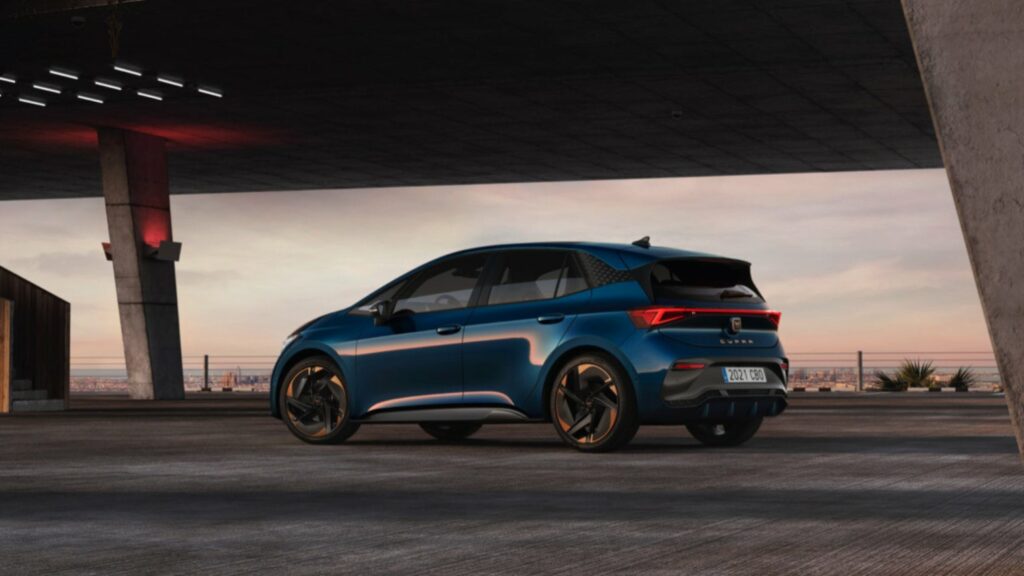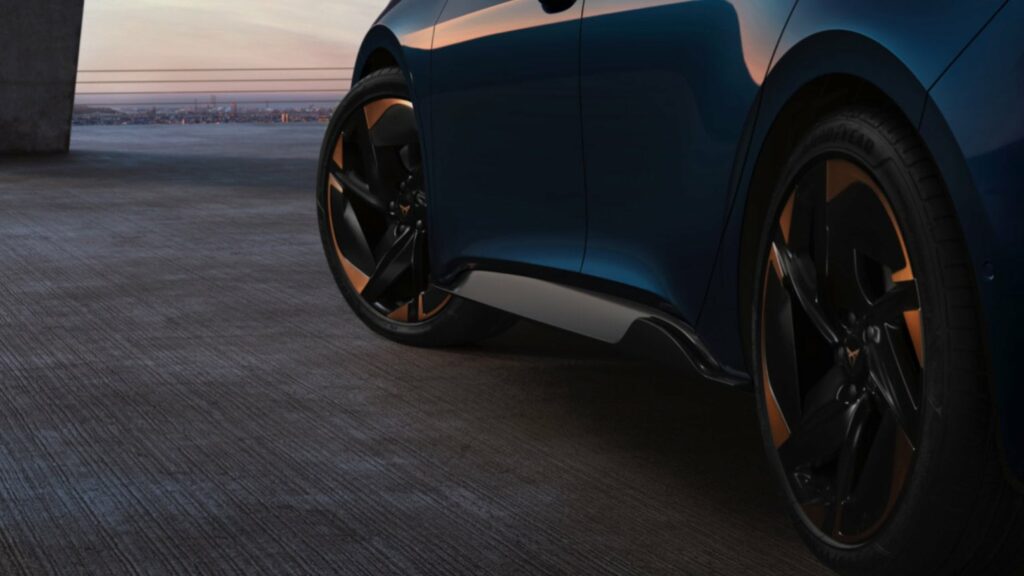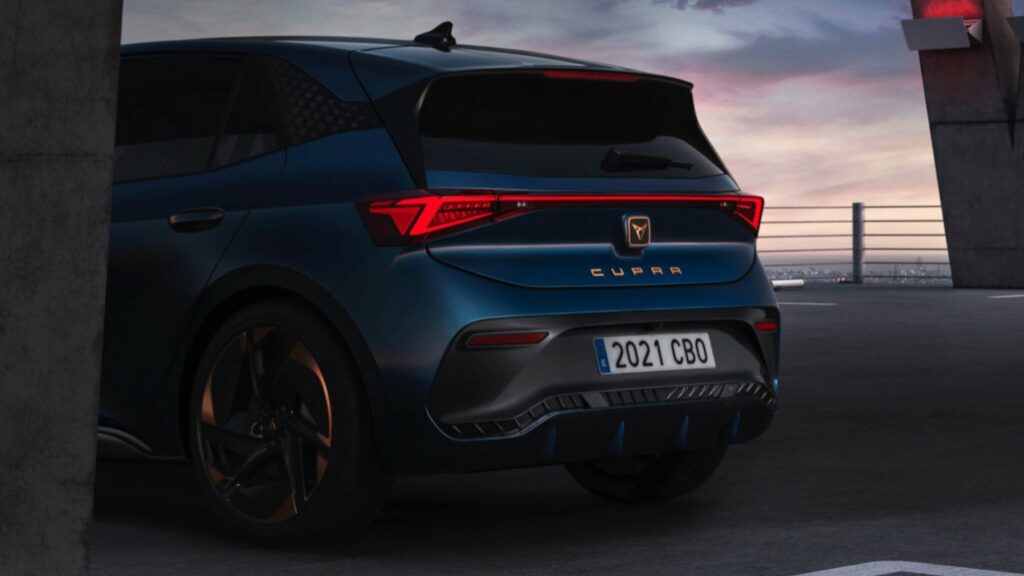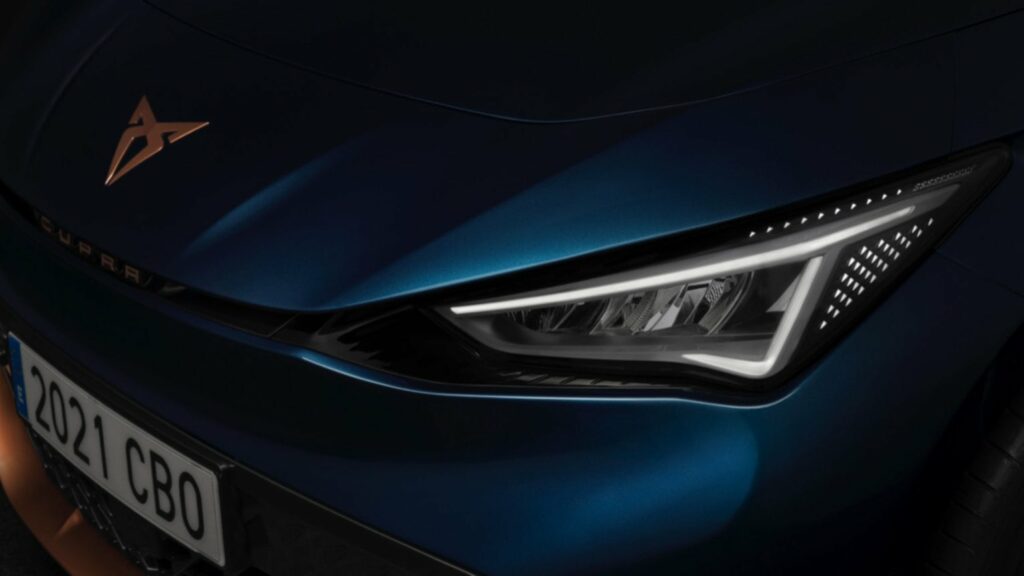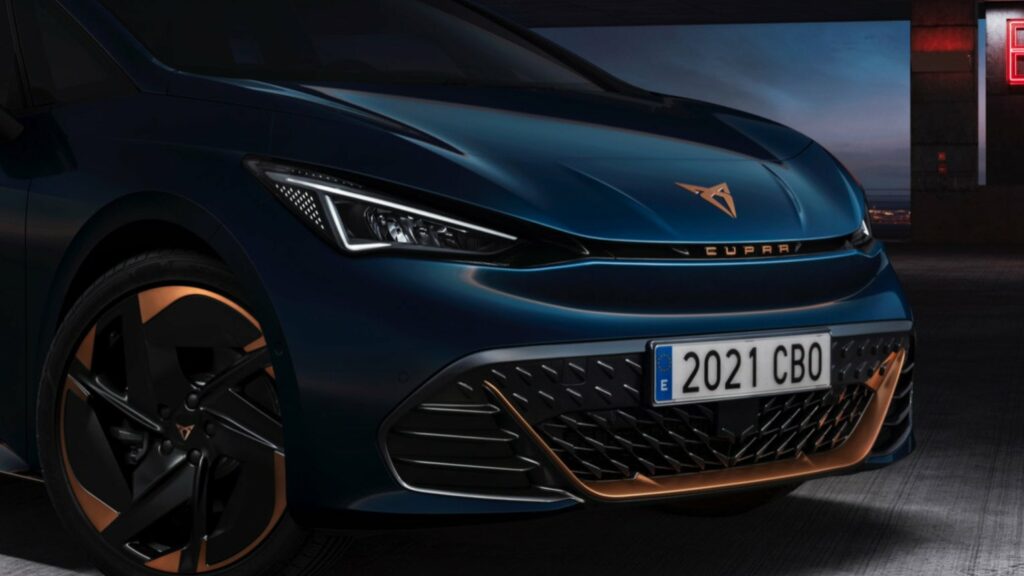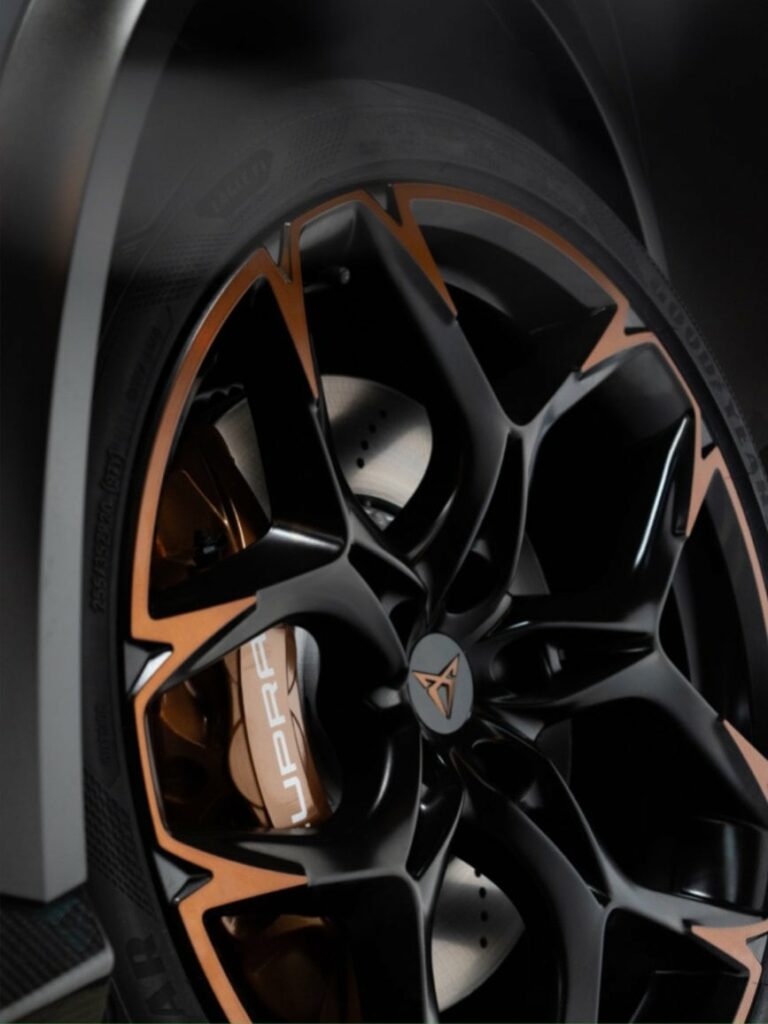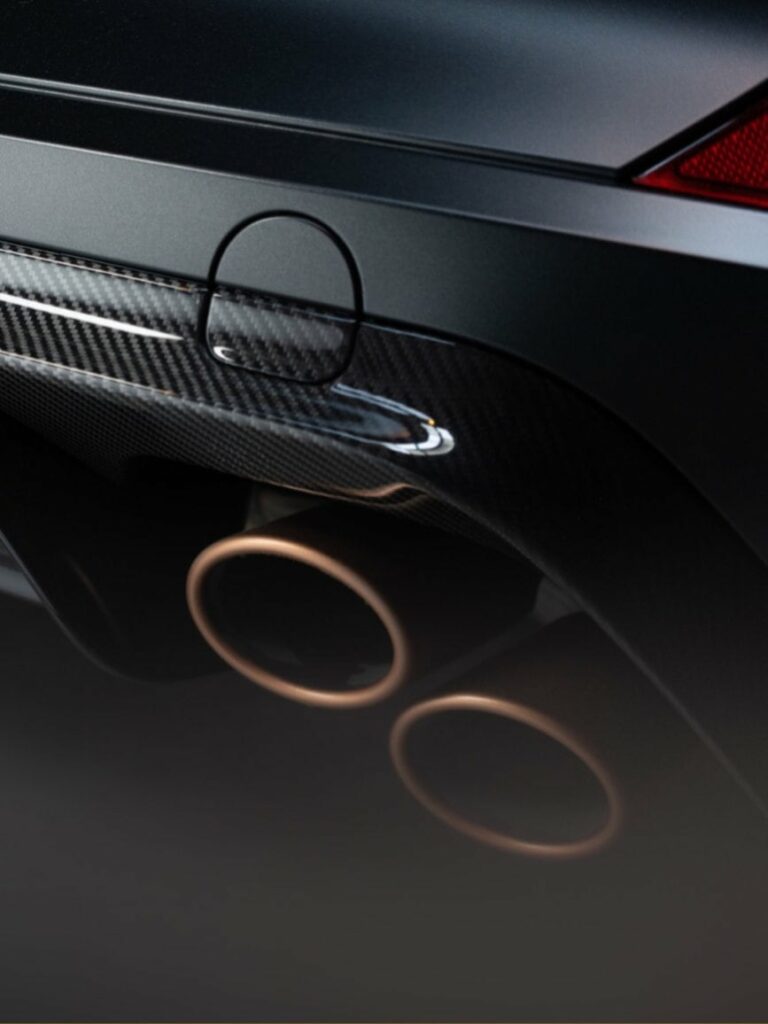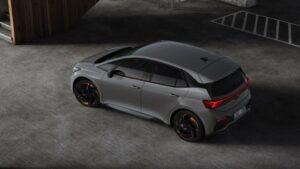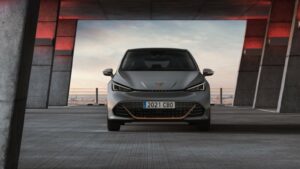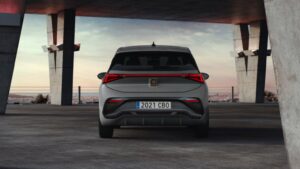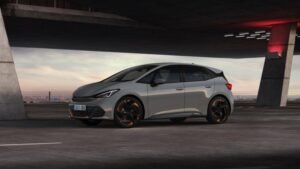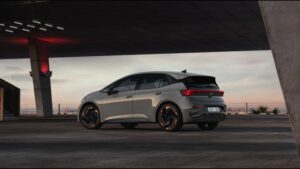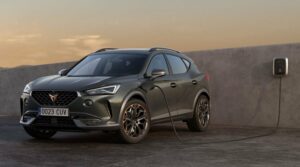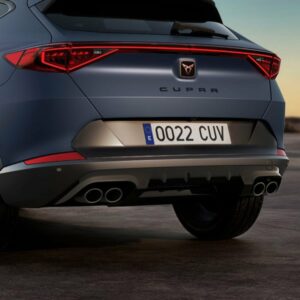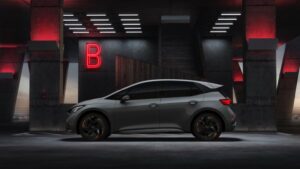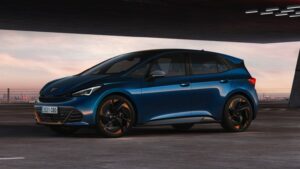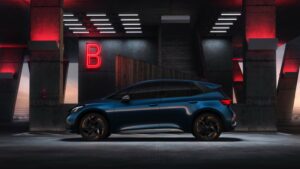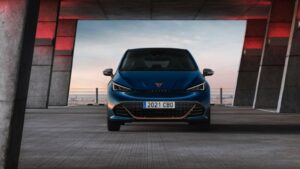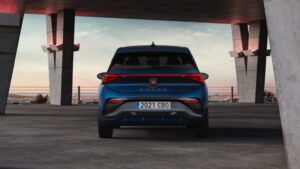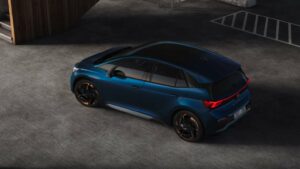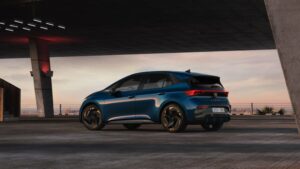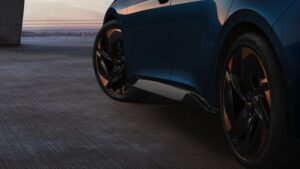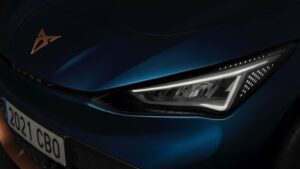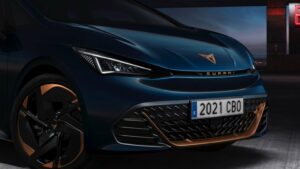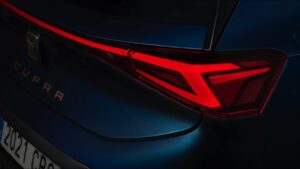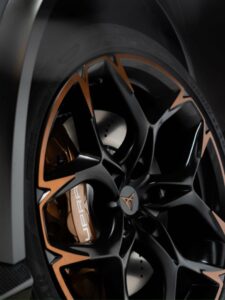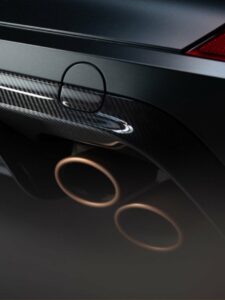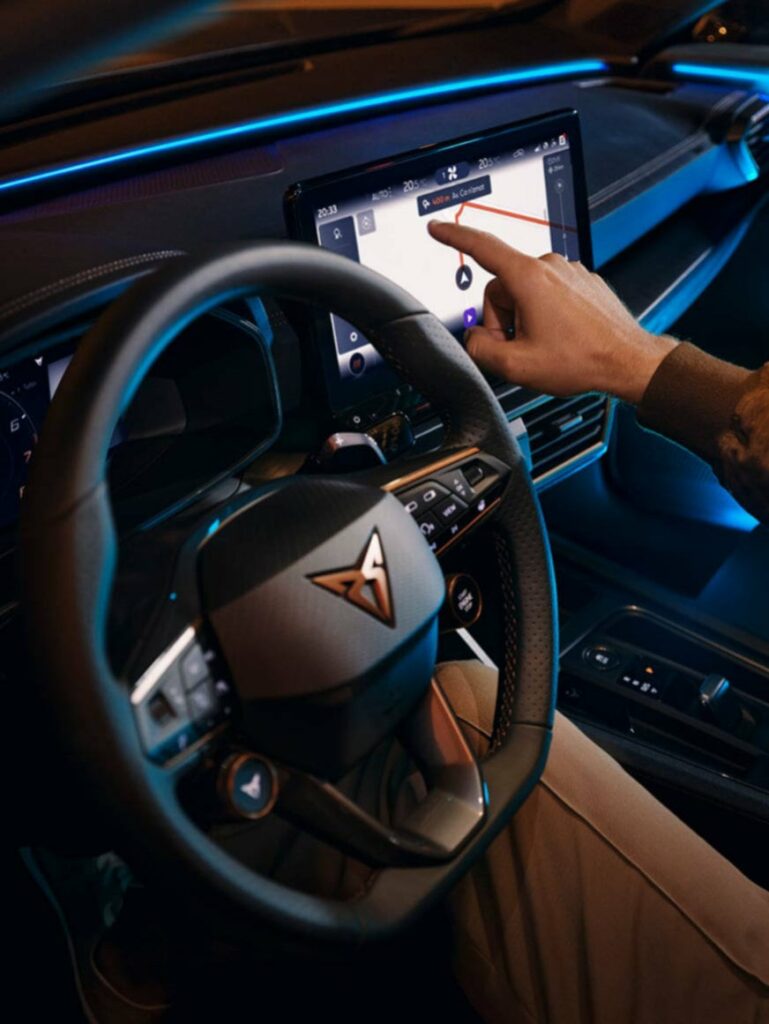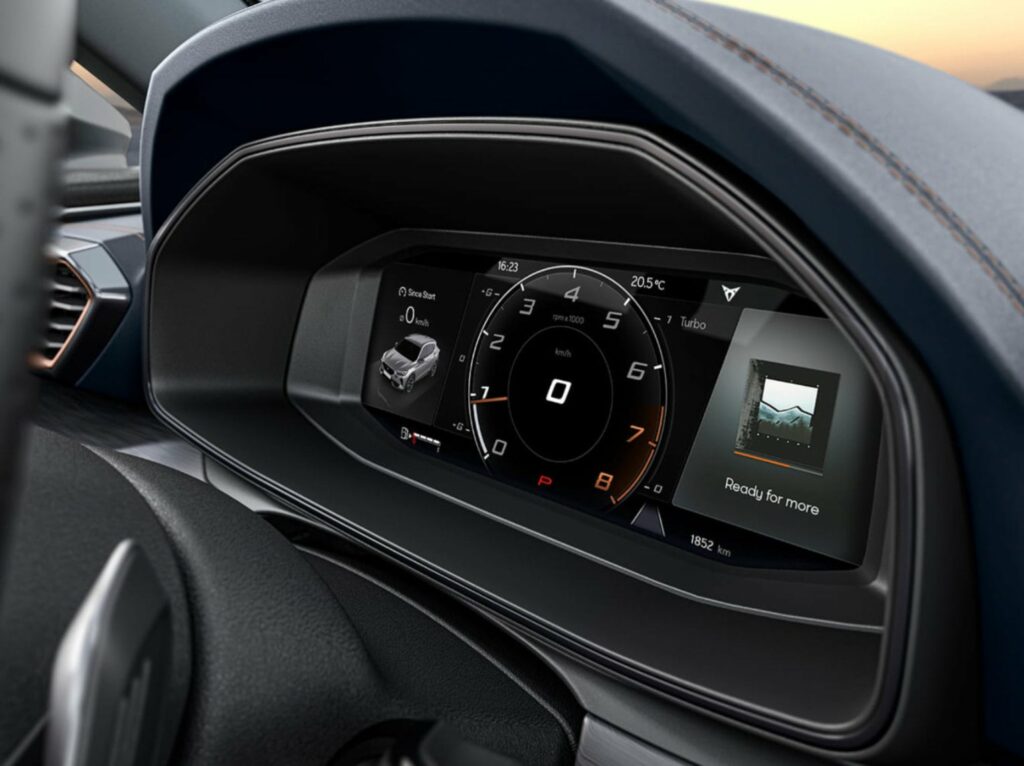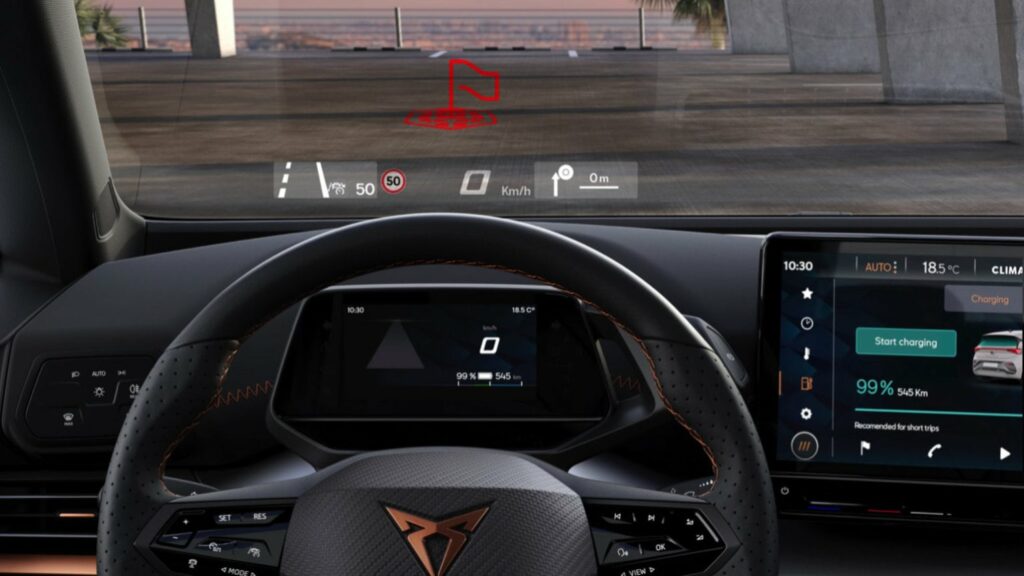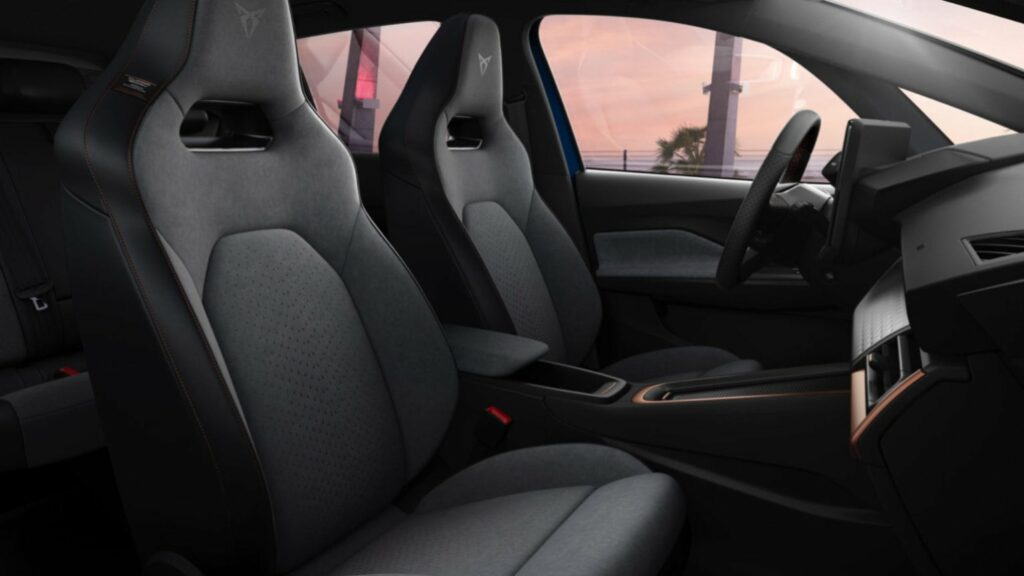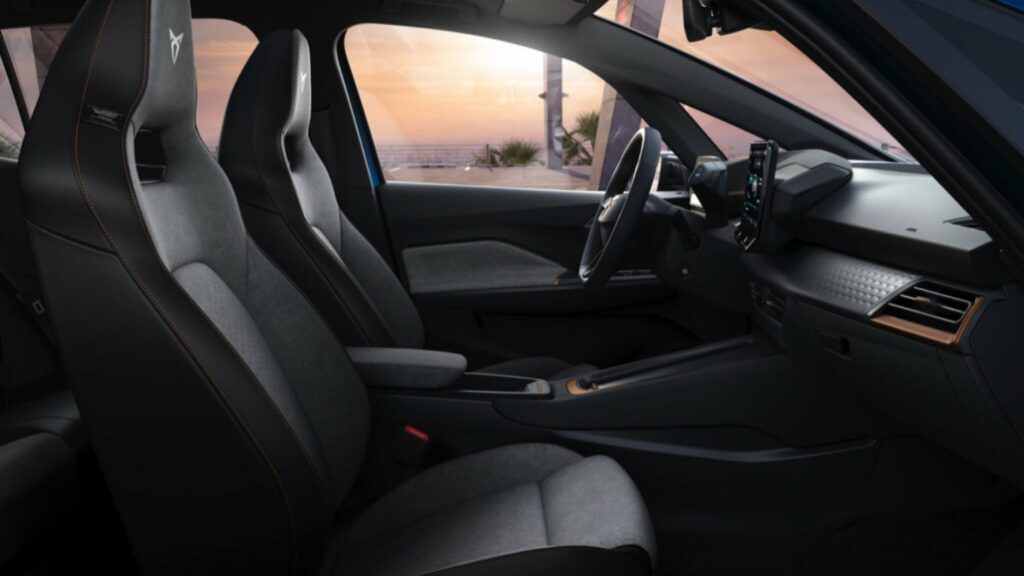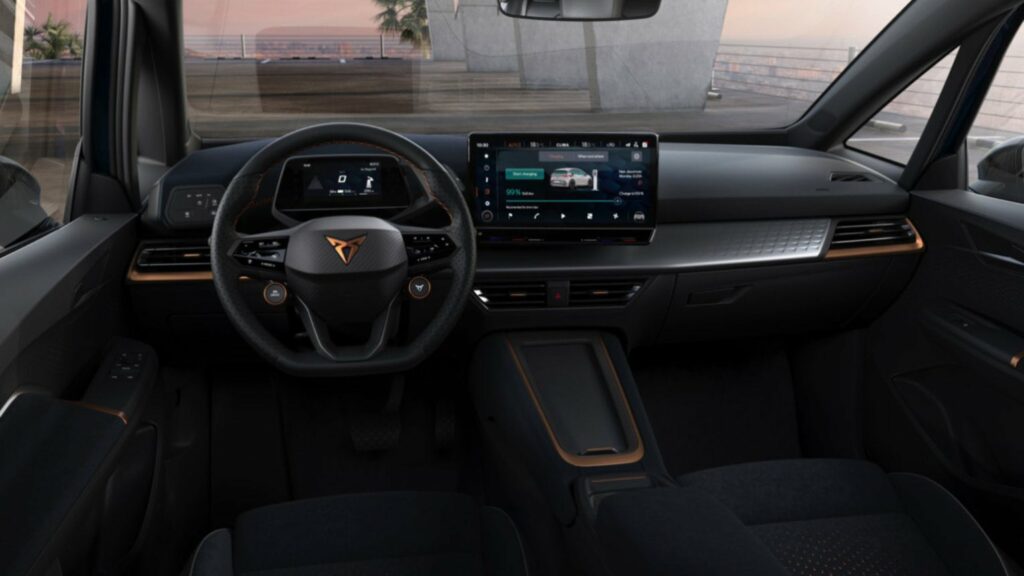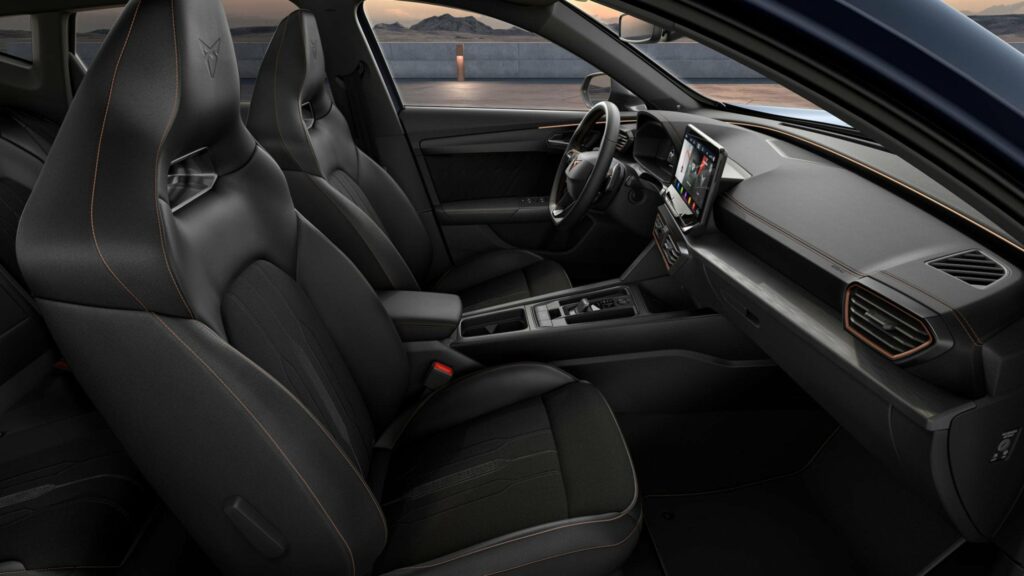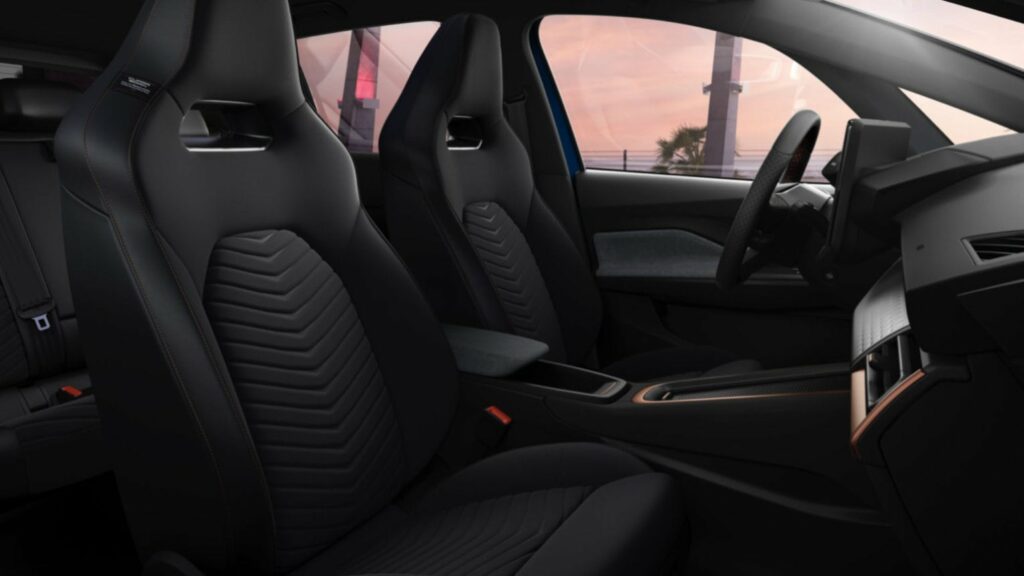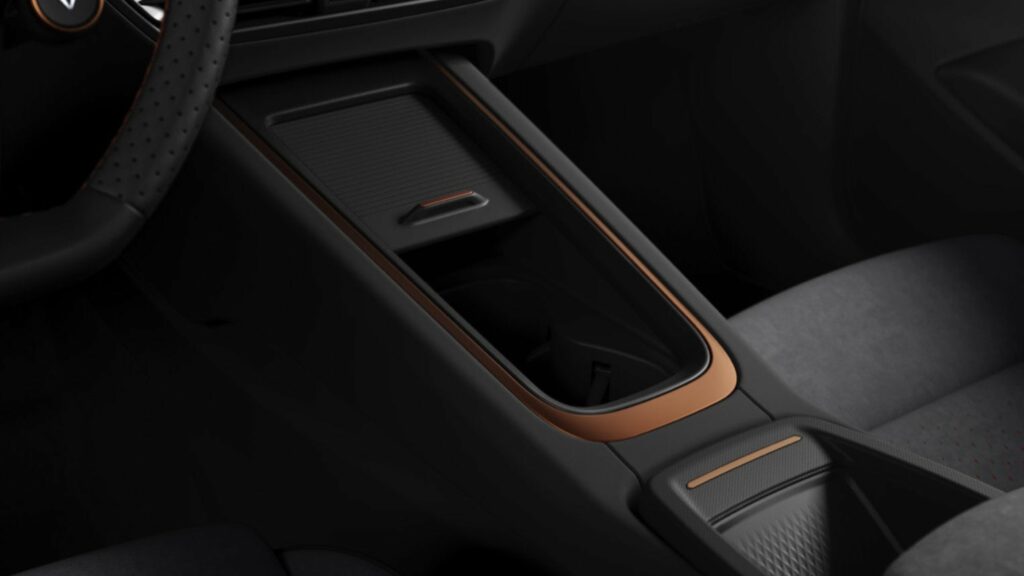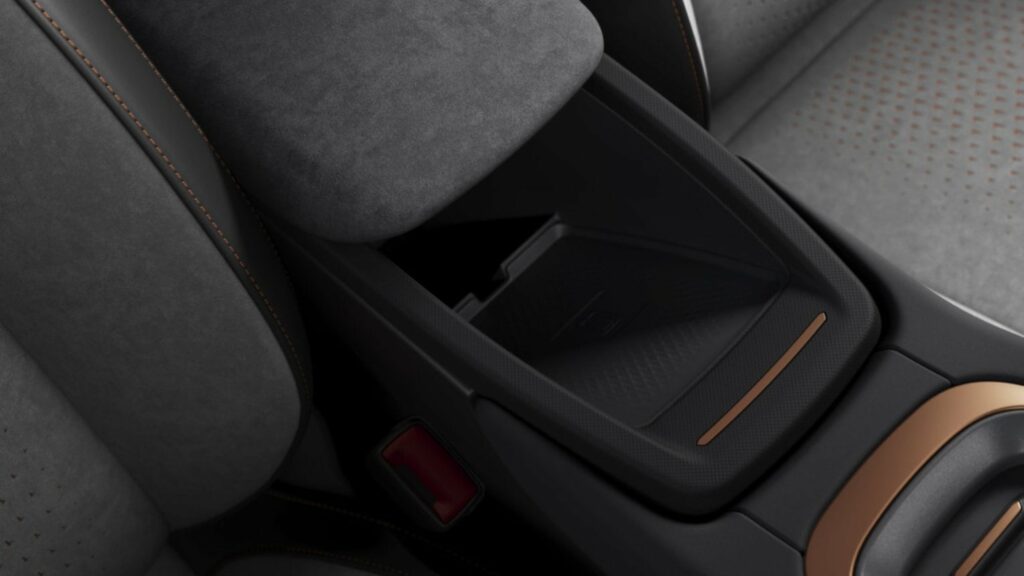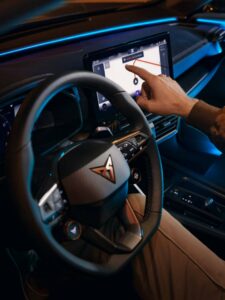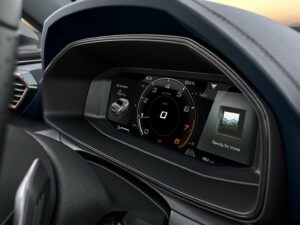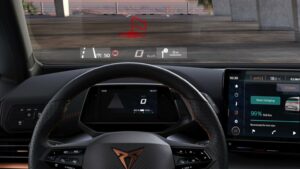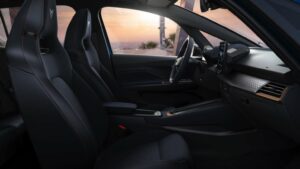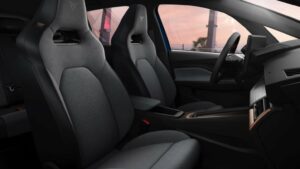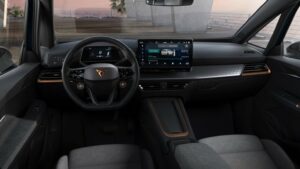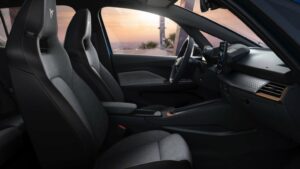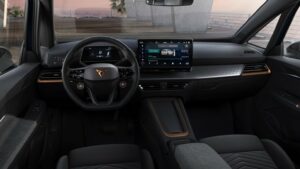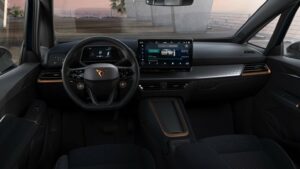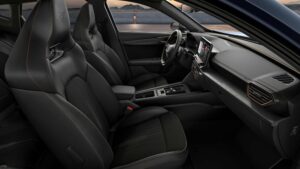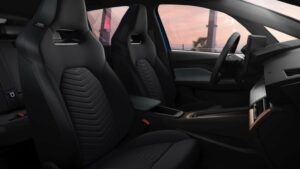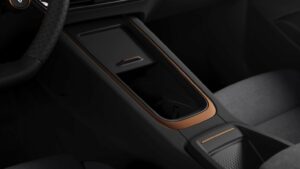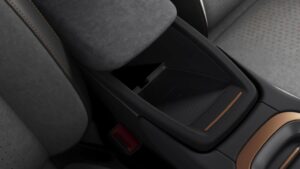CUPRA Born 170 kW – 62 kWh
The CUPRA Born 170 kW – 62 kWh is an electric car produced by CUPRA, the performance-oriented brand of the Spanish automaker SEAT. Here are some key features of this model:
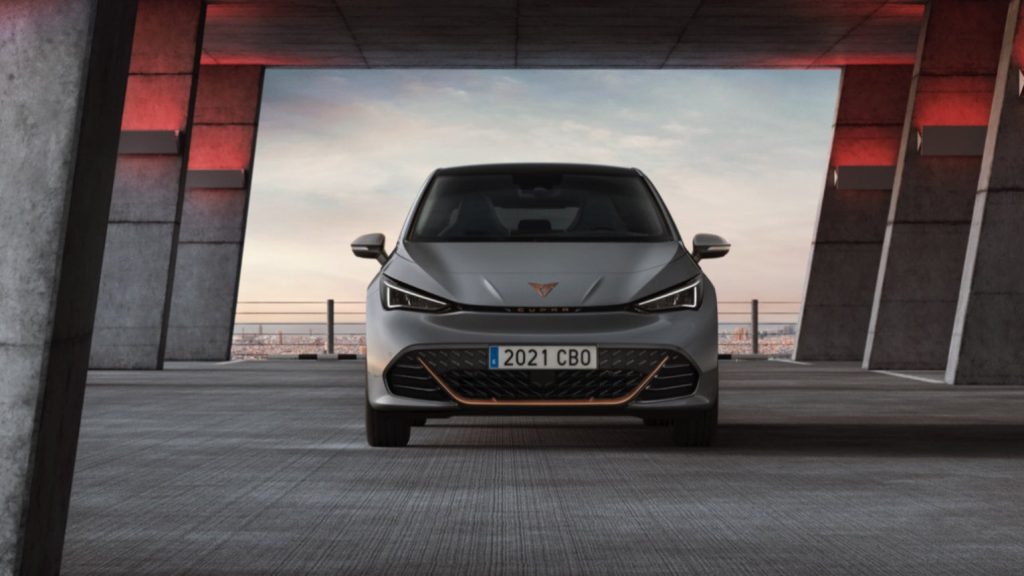
Powertrain: The car has an electric motor that produces 170 kW (equivalent to about 228 horsepower) of power and 310 Nm of torque. The engine is connected to a 62 kWh battery pack that provides a range of up to 345 km (WLTP cycle).
Performance: The CUPRA Born accelerates from 0 to 100 km/h (62 mph) in 6.6 seconds and reaches a top speed of 160 km/h.
Charging: The car supports a fast charging feature that allows you to charge the battery from 0 to 80 percent in about 35 minutes with a 100 kW DC charger. It can also be charged from a 7.2 kW AC charger in about 9.5 hours.
Features: The CUPRA Born is equipped with a number of features such as a digital cockpit, wireless phone charging, adaptive cruise control, lane departure warning, and automatic emergency braking.
Price: The CUPRA Born 170 kW – 62 kWh has a starting price of about £32,295 in the UK (as of March 2023).
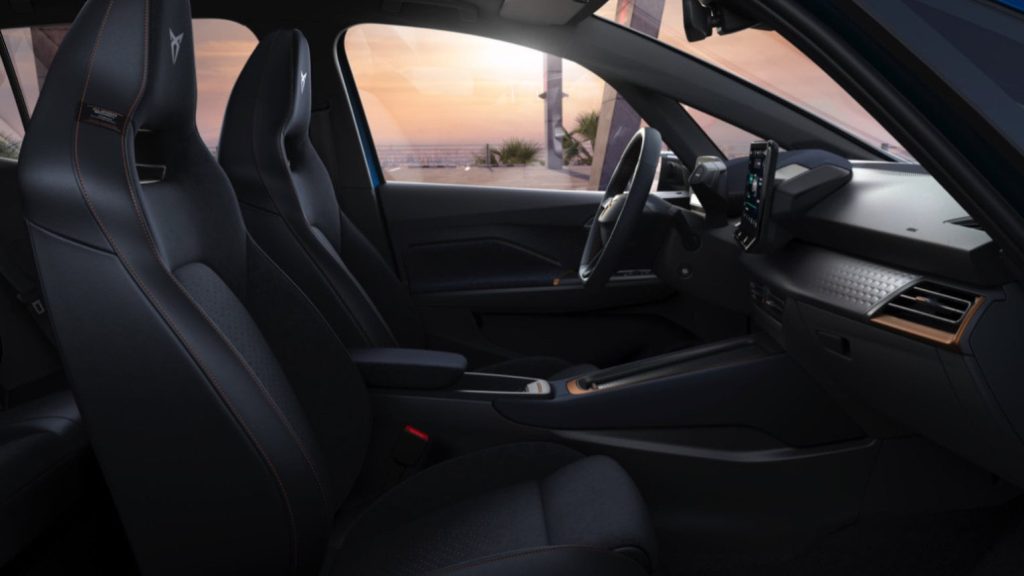
Overall, the CUPRA Born 170 kW – 62 kWh is a stylish and sporty electric vehicle that offers good performance and a decent range. It is suitable for those who want an electric car that is pleasant to drive and has premium features.
| Performance | |
| Acceleration 0 – 100 km/h | 6.6 sec |
| Top Speed | 160 km/h |
| Electric Range | 345 km |
| Total Power | 170 kW (231 PS) |
| Total Torque | 310 Nm |
| Drive | Rear |
| Battery and Charging | |
| Battery Capacity | 62.0 kWh |
| Battery Useable | 58.0 kWh |
| Europe | |
| Charge Port | Type 2 |
| Port Location | Right Side – Rear |
| Charge Power | 11 kW AC |
| Charge Time (0->345 km) | 6h15m |
| Charge Speed | 56 km/h |
| Fastcharge Port | CCS |
| FC Port Location | Right Side – Rear |
| Fastcharge Power (max) | 100 kW DC |
| Fastcharge Time (35->276 km) | 33 min |
| Fastcharge Speed | 430 km/h |
| Energy Consumption | |
| EVDB Real Range | |
| Range * | 345 km |
| Vehicle Consumption * | 168 Wh/km |
| CO2 Emissions | 0 g/km |
| Vehicle Fuel Equivalent * | 1.9 l/100km |
| WLTP Ratings | |
| Range * | 420 km |
| Rated Consumption * | No Data |
| Vehicle Consumption * | 138 Wh/km |
| CO2 Emissions | 0 g/km |
| Rated Fuel Equivalent * | No Data |
| Vehicle Fuel Equivalent * | 1.6 l/100km |
|
Rated = official figures as published by manufacturer. Rated consumption and fuel equivalency figures include charging losses.
|
|
|
Vehicle = calculated battery energy consumption used by the vehicle for propulsion and on-board systems.
|
|
| Real Energy Consumption Estimation between 114 – 237 Wh/km | |
| City – Cold Weather * | 171 Wh/km |
| Highway – Cold Weather * | 237 Wh/km |
| Combined – Cold Weather * | 200 Wh/km |
| City – Mild Weather * | 114 Wh/km |
| Highway – Mild Weather * | 181 Wh/km |
| Combined – Mild Weather * | 145 Wh/km |
|
Energy use for each trip will vary considerably depending on the driver and the conditions. Therefore, we have provided a range of estimates which can be useful in developing an understanding of the potential benefits of this technology. |
|
| Dimensions and Weight | |
| Length | 4322 mm |
| Width | 1809 mm |
| Width with mirrors | No Data |
| Height | 1537 mm |
| Wheelbase | 2766 mm |
| Weight Unladen (EU) * | 1825 kg |
| Gross Vehicle Weight (GVWR) | No Data |
| Max. Payload | No Data |
| Cargo Volume | No Data |
| Cargo Volume Max | No Data |
| Cargo Volume Frunk | 0 L |
| Roof Load | No Data |
| Tow Hitch Possible | No Data |
| Towing Weight Unbraked | No Data |
| Towing Weight Braked | No Data |
| Vertical Load Max | No Data |
| Miscellaneous | |
| Seats | 5 people |
| Isofix | No Data |
| Turning Circle | 10.2 m |
| Platform | VW MEB |
| Car Body | Hatchback |
| Segment | C – Medium |
| Roof Rails | No Data |
| EV Dedicated Platform | Yes |
Home and Destination Charging (0 -> 100%)
A public charging station is required to use the highest possible charging rate. The EVSE/charging station’s charging capacity affects how long it takes to fully charge the battery. The table below shows all possible options for fully charging the CUPRA Born 170 kW – 62 kWh.
In Europe, plugging an electric car into an outlet is often as easy as plugging it into a household outlet, but there are differences from country to country. The table below shows the different ways to charge the CUPRA Born 170 kW – 62 kWh, but in some countries some chargers may not be available.
Type 2 ( IEC 62196)

| Charging Point | Max. Power | Power | Time | Rate |
| Wall Plug (2.3 kW) | 230V / 1x10A | 2.3 kW | 29h45m | 12 km/h |
| 1-phase 16A (3.7 kW) | 230V / 1x16A | 3.7 kW | 18h30m | 19 km/h |
| 1-phase 32A (7.4 kW) | 230V / 1x32A | 7.4 kW | 9h15m | 37 km/h |
| 3-phase 16A (11 kW) | 400V / 3x16A | 11 kW | 6h15m | 55 km/h |
| 3-phase 32A (22 kW) | 400V / 3x16A | 11 kW | 6h15m | 55 km/h |
Fast Charging (10 -> 80%)
If you want to enjoy driving an electric car, one of the most important features to consider is the number of miles per hour the car can travel while charged. This is called the “range” of the car. All electric cars have a certain range, even if they are 100% charged. This is because they do not have an internal combustion engine to lean on if you need to drive a long distance.
Max. Power: The maximum power provided by the charging point
Avg. Power: The average power provided by the charging point during a session of 10% to 80%.
Time: the time it takes to charge from 10% to 80%
Speed: the average charging rate during the session of 10% to 80%
Combined Charging System (CCS Combo 2)
| Charging Point | Max. Power | Avg. Power | Time | Rate |
| CCS (50 kW DC) | 50 kW | 40 kW | 64 min | 220 km/h |
| CCS (100 kW DC) | 100 kW | 78 kW | 33 min | 430 km/h |
| CCS (150 kW DC) | 100 kW | 78 kW | 33 min | 430 km/h |
| Brand | CUPRA |
| Model | Born 170 kW - 62 kWh |
| Body Style | Hatchback |
| Car Engine | electric |
| Motor power | 170 |
| Maximum Torque, Nm | 310 |
| Battery Energy, kWh | 62.0 |
| Power reserve (NEDC/EPA/WLTP), km | - / - / 345 |
| Level Charging (230/400/DC), hours | - / 6.15 / 0.33 |
| Electrical Acceleration, 0-100 km/h (0-62.1 mph) in sec | 6.6 |
| Top Speed, km/h | 160 |
